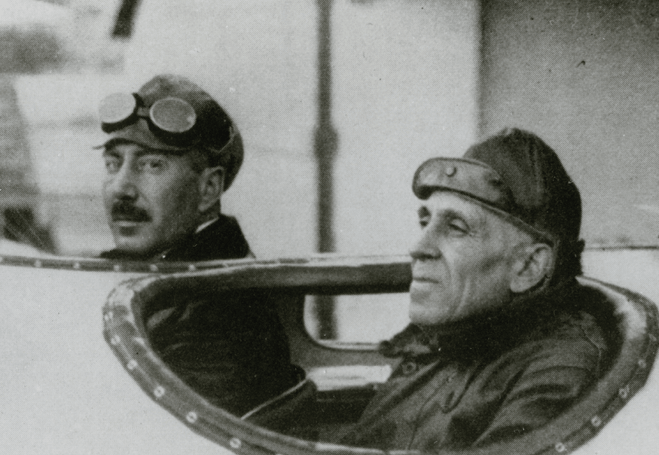On March 30, 1922, at 7 a.m., exactly a century ago, a Fairey F IIID MkII single-engine aircraft departed the waters of the Tagus river in Portugal. Named “Lusitânia”, it had Gago Coutinho and Sacadura Cabral on board with one very specific destination: Brazil.
This year, in January, the centennial celebration of this voyage, the first air crossing of the South Atlantic, Lisbon-Rio de Janeiro, began. A commission from the Navy and the Air Force presented the program of the voyage in the Gallets pavilion, at the Museum of the Navy, Jerónimos.

The commemoration is intended to be educational. An exhibition has been organized, for now at the Museu da Marinha, but it will be itinerant, touring all the districts of the country and the islands. The exhibition focuses in detail on the two heroes’ experience in aerial navigation and on the devices invented by Gago Coutinho, the “artificial horizon sextant” and the “course corrector”, which demonstrate the pioneering role of that journey.
It was these inventions that made possible the first aerial ocean crossing carried out with scientific rigor. Sacadura and Gago Coutinho were wise in what they did. In every stopover, they always docked at the programmed tiny, lost points in the middle of the Atlantic – their science was demonstrated. But when mechanical problems and bad weather sank their first two seaplanes, Gago Coutinho and Sacadura Cabral didn’t give up and completed the trip – character saved them.

The airplane was born with the 20th century, the first controlled heavier-than-air flight by the Wright brothers was in 1903. In the very next decade the glorious flying machine was sponsored by the Great War (1914-1918). The war, which had been invented to dominate the land and the seas, encountered a third dimension, the air. And the airplane found its first use: to reconnoiter what was happening in the enemy’s territory. In May, 1919, the Americans flew four planes from New York to Lisbon, connecting America and Europe – and the Curtiss NC-4 plane was the first.
At 7 a.m. on March 30, 1922, sailors Gago Coutinho, a geographer, and Sacadura Cabral, a pilot, boarded the seaplane Lusitânia and left for Brazil. A year earlier, they had presented the “course corrector” at the First Air Navigation Congress in Paris. This solved some of the problems already mentioned in this chronicle, about how to fly over the oceans with knowledge of the destination. Also on the issue of the invisibility of the sea’s horizon line, Gago Coutinho adapted a sextant to be used in airplanes.

Their journey looked like this. Lisbon-Las Palmas, on the scheduled island of Gran Canaria. Canary Archipelago-Cape Verde: arrival in São Vicente, the closest island, to save gasoline and take off in Santiago, to shorten the next stopover, all as programmed. The next part of the trip, the most special, long and hidden: to reach the São Pedro rock, Brazilian territory, but a small rock in the middle of the ocean. With nothing around, almost a thousand kilometers away.

There is another symbolism to the flight 100 years ago: it became a Luso-Brazilian identification that has never been repeated again. Since the year before, 1921, when they tested in the Lisbon-Funchal raid the instruments they had created, the two aviators were prepared for the intercontinental crossing. But they preferred to postpone it until 1922, in order to honor, with their act, the first centennial of Brazil’s independence.













